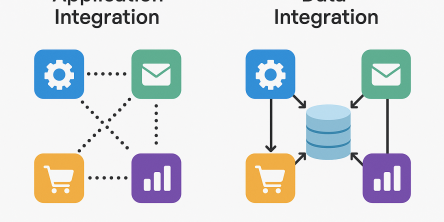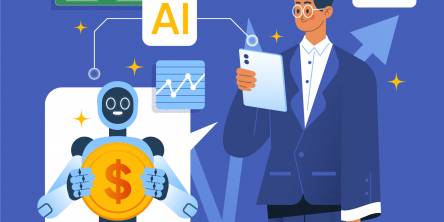Mark

I am a technology writer with a strong passion for my profession, fortunate enough to picture good and bad of tech world with tips, tricks, challenges and their solutions.
Articles from this author
We all know that companies today are no longer limited to a single physical location. Work processes are also no longer strictly isolated.
Today, modern businesses face constant pressure to operate with maximum efficiency. This requires a technology infrastructure that is both agile and robust. However, the traditional model of on-premises data centers often has significant limitations. These legacy systems can drain valuable resources from teams.
It is neither secret nor news that the mind-boggling pace of digital transformation around us has totally altered consumer expectations.
A modern business must continually adapt. This bit everyone seems to know.
The modern healthcare industry is undergoing a significant transformation. The models of healthcare that we are used to thus far are now making way for a more data driven approach
In the modern world, maintaining good health often feels like a constant challenge. Between busy lifestyles, sedentary habits, and lack of motivation, many people find it difficult to stay consistent with exercise, diet, or wellness practices.
Amazon Simple Queue Service (SQS), Simple Notification Service (SNS), and EventBridge are just a few of the messaging services that AWS provides to meet various demands when it comes to creating scalable and effective cloud systems.
Businesses today operate in an environment where cost efficiency and data sovereignty top the list of important things to a company.
Businesses must quickly adjust to the unparalleled rate of technological advancement if they want to remain competitive. Consumer demands are constantly changing, requiring value to be delivered more quickly.
A short time ago, banking had physical branches, paper records, and set procedures. But things have changed.
Thanks to cloud computing, specialized SaaS apps have become rather accessible.
The global cloud AI market was valued at USD 78.36 billion in 2024. It is projected to reach over USD 589 billion by 2032, growing at a staggering compound annual growth rate (CAGR) of 28.5%, according to Fortune Business Insights.
FinTech stands at the top of its digital shift using some of today's hottest tech, with AI leading the pack. While some FinTech firms have nailed AI use, many still can't tap its full power to get ahead.
No matter at which industry one may look today, there are always organizations looking for ways to speed up software development sans any compromises regarding the levels of quality. In such a market, the ability to rapidly iterate on products and ensure seamless operations has become a critical differentiator for success.
The current business environment and the mind boggling pace at which continues to evolve has been for everyone to see. But what many may not realise is that this change has made effective communication with potential customers more important than ever.
Ask anyone and they would admit that constant change and increased complexity have now become the hallmarks of business in the modern age.
The business landscape today is dynamic and rapidly changing. This much has been for everyone to see. For companies of all sizes, this change has meant constant efforts for efficiency and success.
Unless you have been living under a rock, you know that companies today generate and accumulate massive amounts of data. This data is gathered from a variety of sources.
It is clear as day to see that businesses today operate in an environment where software is a critical pillar for innovation and customer interaction. No wonder then that organizations are becoming increasingly reliant on sophisticated software apps to provide value. It is also how they can maintain a competitive advantage
Modern businesses have come to rely on technological infrastructure, and quite heavily at that, no? Everyone can see the growing dependence of all industries on digital solutions to go about their operations. However, the complexity of modern business is beginning to necessitate the kind of technological solutions that can scale with changing requirements
Digital technologies and the transformation they have brought about have fundamentally altered how businesses operate. This has resulted in an increase in data generation and the adoption of various software, among other things
Navigating global supply chains, no matter how complex, has become fundamental for success today. After all, the modern market is marked by rapid globalization and fierce competition
The demand for innovation is immense, isn't it? Then there is also the need to adapt to rapidly changing market demands. Phew! Businesses have so much to deal with, especially the seemingly unending challenge of maintaining IT infrastructure.
The modern business climate is quite dynamic. This much has been for everyone to see. This translates into the need for different ways to improve business agility and efficiency. No wonder companies feel immense pressure to innovate faster and provide exceptional customer experiences.
























